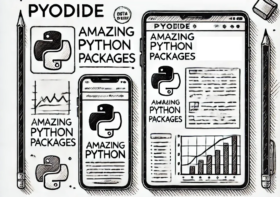Leveraging RESTful Web API, Swagger, GitHub, Automation Testing, Open Data, and CI/CD for Effective API Documentation, Collaboration, and Reliability — Creating a Data as a Service (DaaS) Platform (Part 1)
Data is the new oil, and Data as a Service is the refinery that transforms it into valuable insights.
Table of Contents
Data as a Service (DaaS) platforms have revolutionized the way businesses access and utilize data. These platforms provide a wide range of structured and unstructured data, empowering organizations to make data-driven decisions and gain valuable insights. In this article, I will explore the process of creating a DaaS platform, focusing on leveraging RESTful Web API principles, Swagger for API documentation and interaction, GitHub for collaboration and version control, automation testing for reliability, open data sources, and CI/CD for seamless development and deployment.

Inthe initial installment of this series of articles, I will delineate the essential components required to construct a Data as a Service (DaaS) Platform.
Defining the Data as a Service Platform
- The scope and objectives of a DaaS platform need to be determined, including the types of data offered and the target audience.
- Incorporating open data sources can enhance the variety and richness of the datasets available on the platform.
- Understanding the specific needs of the target audience, such as businesses seeking market insights, developers looking for datasets for application development, or researchers requiring access to specific data sources.
Data Acquisition and Integration
- Reliable and reputable data sources need to be identified, such as public APIs, open datasets, government databases, or partnerships with data providers.
- Mechanisms must be developed to acquire and integrate data from various sources, ensuring data quality and consistency.
- Implementing data processing pipelines to clean, transform, and enrich the data, making it more accessible and valuable for users.
Data Storage and Management
- A scalable and secure data storage infrastructure must be designed to handle the volume and variety of incoming data.
- Cloud-based storage solutions can be utilized for scalability and durability.
- Implementing data management practices, including backup, replication, and data versioning, ensures data integrity and availability.
RESTful Web API Design
- Designing RESTful APIs to expose the data services and functionalities offered by the DaaS platform.
- Following REST principles, including resource-based URL structures, HTTP verbs, and status codes, for a consistent and intuitive API design.
- Considering the granularity of the APIs to provide users with flexibility in accessing and manipulating the data.
Swagger for API Documentation
- Integrating Swagger into the DaaS platform to generate comprehensive and interactive API documentation.
- Utilizing Swagger’s YAML or JSON specifications to define API endpoints, request/response schemas, authentication mechanisms, and available data services.
- Leveraging Swagger UI to provide developers with an intuitive interface for exploring, testing, and understanding the APIs, complete with interactive documentation and code samples.
GitHub for Collaboration and Version Control
- Creating a GitHub repository to serve as the central repository for the DaaS platform’s source code.
- Utilizing Git for version control, allowing for tracking changes, managing branches, and facilitating effective collaboration with team members.
- Leveraging GitHub’s collaboration features, such as pull requests, code reviews, and issue tracking, to encourage collaboration and maintain code quality.
Automation Testing
- Implementing automation testing to ensure the reliability and robustness of the DaaS platform.
- Utilizing testing frameworks, such as Selenium, Postman and/or JMeter, to automate API testing, including endpoint validation, data integrity, and response verification.
- Developing test scripts that cover various scenarios, including positive and negative test cases, edge cases, and performance testing.
- Incorporating continuous integration and deployment (CI/CD) practices by integrating the GitHub repository with a CI/CD tool, such as Jenkins or GitHub Actions, to automate the execution of tests and ensure a smooth development and deployment process.
API Security and Authentication
- Implementing robust security measures to protect the APIs and the underlying data.
- Utilizing authentication mechanisms, such as API keys or OAuth 2.0, to control access to the DaaS platform and ensure authorized usage.
- Employing encryption and secure communication protocols (e.g., HTTPS) to safeguard data transmission.
Open Data Collaboration
- Collaborating with open data initiatives and organizations to incorporate high-quality open datasets into the DaaS platform.
- Promoting data sharing and contributing back to the open data community by providing valuable datasets and insights derived from the platform.
Scalability and Performance
- Optimizing the performance and scalability of the DaaS platform to handle increasing user demand and data processing requirements.
- Utilizing caching mechanisms, horizontal scaling, and load balancing techniques to ensure high availability and responsiveness.
- Implementing efficient indexing and query optimization strategies to enable fast and efficient data retrieval.
Monitoring and Analytics
- Implementing monitoring tools and analytics to gain insights into platform usage, performance, and user behavior.
- Utilizing logging, metrics, and error tracking to identify issues, optimize resource utilization, and enhance user experience.
- Leveraging analytics to gather user feedback, understand usage patterns, and identify areas for improvement.




Leave a Reply